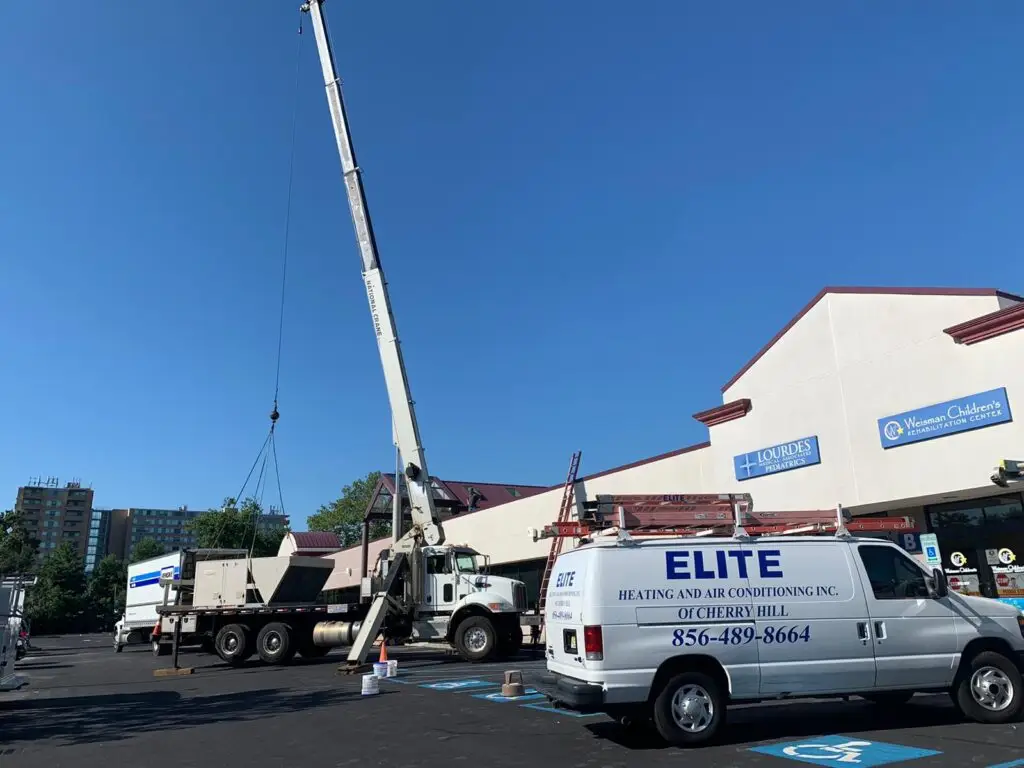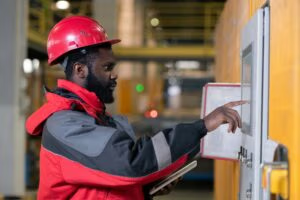Thermostat Error Codes in Commercial Buildings: What They Mean and How to Fix Them
Thermostat error codes can be alarming, especially in a commercial setting where comfort, efficiency, and productivity depend on a well-functioning HVAC system. Error codes often indicate specific issues within the thermostat or the HVAC system itself. Here’s a rundown of common thermostat error codes, what they typically mean, and how to address them to keep your business environment comfortable.
1. Error Code: “E1” or “No Signal”
The “E1” or “No Signal” code usually appears when the thermostat cannot communicate with the HVAC system. This loss of communication may be due to wiring issues, power interruptions, or faulty components within the control board.
- What to Look For: Check if other thermostats in the building display the same error. If only one thermostat is affected, it may indicate a local wiring issue.
- Professional Solution: HVAC technicians can assess wiring and communication signals between the thermostat and HVAC unit, repairing or replacing faulty connections as needed.
2. Error Code: “Low Battery”
Even in commercial settings, some thermostats have backup batteries. If the “Low Battery” error code appears, it’s a straightforward indication that the battery needs replacement. This code typically appears only on specific types of commercial thermostats.
- What to Look For: If your thermostat uses batteries, check and replace them as needed. Backup batteries help the thermostat retain settings in case of a power outage.
- Quick Fix: Replace the batteries to reset the thermostat and clear the code. If the error persists, it could be a sign of internal issues that need professional inspection.
3. Error Code: “High Temp” or “System Overload”
A “High Temp” or “System Overload” error is a safety feature that activates when the thermostat detects temperatures outside its safe operating range. This may indicate overheating within the HVAC system or a fault in temperature regulation.
- What to Look For: Check if the HVAC unit is producing unusual noises or overheating. This error often requires turning off the system to prevent further issues.
- Professional Solution: HVAC professionals can inspect both the thermostat and the HVAC unit to diagnose the underlying cause of overheating. Common solutions include cleaning or replacing worn parts and adjusting the system’s internal temperature controls.
4. Error Code: “Short Cycle” or “Frequent Cycling”
The “Short Cycle” or “Frequent Cycling” code appears when the thermostat detects that the HVAC system is turning on and off too frequently. This cycling can result from faulty sensors, wiring problems, or thermostat calibration issues.
- What to Look For: Observe if the HVAC unit repeatedly starts and stops within short intervals, which is often audible. Short cycling can lead to increased wear on the HVAC system and higher energy costs.
- Professional Solution: An HVAC technician can recalibrate the thermostat, check for faulty sensors, and ensure proper wiring. Preventing short cycling can improve the efficiency and longevity of the HVAC system.
Common Thermostat Error Codes and What They Mean
| Error Code | Meaning | DIY Tips | When to Call a Professional |
|---|---|---|---|
| E1 or No Signal | Communication failure with HVAC system | Check nearby thermostats for similar errors | Persistent “No Signal” errors likely indicate wiring issues |
| Low Battery | Battery needs replacement | Replace thermostat batteries if applicable | Contact a professional if error persists after replacement |
| High Temp/System Overload | System is overheating | Turn off system and check for HVAC unit overheating | Immediate professional inspection for potential safety issues |
| Short Cycle/Frequent Cycling | HVAC system turning on/off too often | Listen for frequent cycles, check thermostat settings | Professional calibration and sensor check recommended |
Frequently Asked Questions
Yes, different brands may use unique codes or terminology, but many commercial thermostat error codes share common meanings. Refer to the user manual for a detailed list, or consult an HVAC professional for interpretation.
Some error codes may clear with a reset, while others require professional diagnostics. Try resetting the thermostat by turning it off and back on or using the “Reset” function, but if the code reappears, it’s best to contact a technician.
Not all error codes mean a severe issue; many are warnings of minor problems like low battery or temporary overheating. However, codes related to communication or frequent cycling often indicate deeper issues that need professional attention.
In Conclusion
Error codes on a commercial thermostat are essential warning signals that can help you maintain an efficient HVAC system. By understanding these codes and knowing when to call for professional assistance, you can prevent small issues from becoming costly problems. For expert thermostat repair, error code diagnostics, or a thermostat upgrade, contact Elite Heating and Air Conditioning in New Jersey. We’re here to ensure your business stays comfortable and your HVAC system operates smoothly.

- commercial HVAC service, commercial thermostat troubleshooting, HVAC error codes, thermostat error code, thermostat repair


